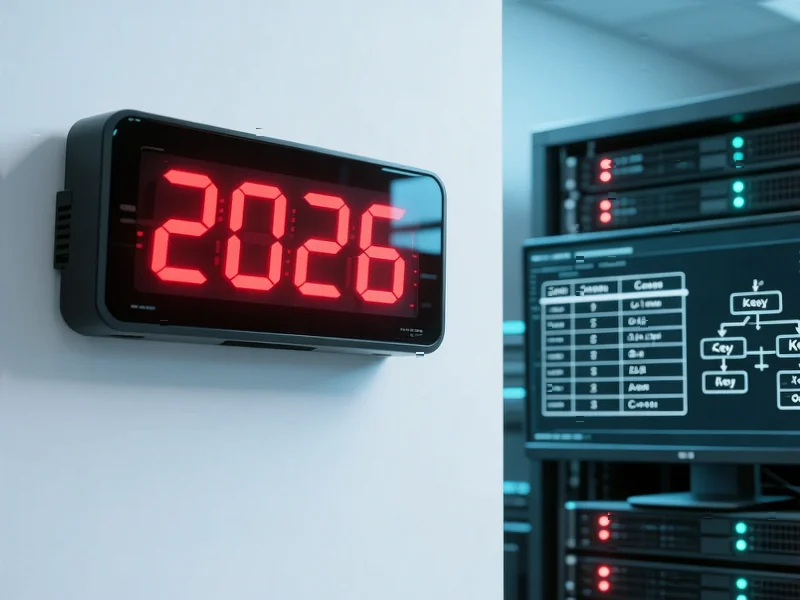According to TheRegister.com, Percona’s monitoring data reveals that 58% of MySQL and MariaDB instances remain on MySQL 8.0, which loses official support on April 30, 2026. Percona co-founder Peter Zaitsev warned that unsupported software means security bugs won’t be fixed, creating significant risks for organizations. While the upgrade from 8.0 to 8.4 is less disruptive than the previous 5.7 to 8.0 migration, Oracle’s commitment to MySQL appears uncertain amid reports of widespread layoffs in the MySQL engineering team, with Zaitsev estimating 60-70% reductions. The database’s popularity continues to decline on the DB-Engines scale, potentially being overtaken by PostgreSQL soon. This creates an urgent migration dilemma for thousands of organizations.
Table of Contents
The Unpatched Vulnerability Time Bomb
What makes this situation particularly dangerous is that software bugs in complex database systems aren’t just theoretical concerns – they’re actively exploited in the wild. When MySQL 8.0 reaches its end-of-life date, organizations running this version become sitting ducks for attackers who study the patch history of newer versions to reverse-engineer vulnerabilities. The security risk extends beyond just the database itself – applications, APIs, and entire infrastructure stacks that depend on MySQL become vulnerable points of entry. Many organizations don’t realize that compliance frameworks like PCI DSS, HIPAA, and SOC 2 explicitly require running supported software, meaning continued use of EOL MySQL could violate regulatory requirements and invalidate cybersecurity insurance policies.
Oracle’s Quiet Retreat from Open Source MySQL
The reported engineering team reductions signal a fundamental strategic shift at Oracle that goes deeper than typical corporate restructuring. Oracle’s increasing focus on HeatWave, their proprietary MySQL-based analytics DBaaS, suggests they’re prioritizing revenue-generating cloud services over the open-source community edition. This creates a dangerous power vacuum in MySQL’s ecosystem – when the primary steward reduces investment, the entire community suffers from slower innovation, delayed security patches, and reduced feature development. History shows us what happens when major corporations deprioritize open source projects they’ve acquired – look at the fragmentation that occurred with OpenOffice.org or the stagnation of Java under Sun Microsystems before Oracle’s acquisition.
The Migration Conundrum: Upgrade Paths and Hidden Costs
While Percona suggests the 8.0 to 8.4 upgrade is relatively straightforward, many organizations face hidden complexities that make migration far from simple. Legacy applications often contain MySQL-specific queries, stored procedures, and data types that may behave differently in newer versions. The testing burden alone can be massive – comprehensive regression testing, performance benchmarking, and application compatibility validation require significant time and resources. For larger enterprises with hundreds of MySQL instances, the coordination challenge becomes enormous, needing careful planning around maintenance windows, data migration strategies, and rollback procedures. Many organizations made the painful jump from 5.7 to 8.0 and are now facing another migration just a few years later, creating migration fatigue that could push them toward alternative databases.
Database Market Realignment and Opportunity
The timing of this crisis coincides with a broader realignment in the database market that’s been years in the making. According to DB-Engines rankings and the Stack Overflow Developer Survey, PostgreSQL’s rising popularity positions it as the natural beneficiary of MySQL’s struggles. However, this migration wave represents more than just a database switch – it’s an opportunity for organizations to rethink their entire data strategy. Companies might consider distributed databases like CockroachDB for global scale, cloud-native solutions like Amazon Aurora for managed services, or even multi-database strategies that match specific workloads to optimal database technologies. The organizations that treat this as a strategic opportunity rather than a compliance burden will emerge with more resilient, future-proof data architectures.
Enterprise Risk and Strategic Response
For enterprise technology leaders, the MySQL 8.0 EOL situation represents a classic case of technical debt coming due at the worst possible time. Many organizations are simultaneously dealing with other pressing technology transitions – Java version upgrades, .NET Framework migrations, and Kubernetes adoption – creating resource contention that could delay MySQL upgrades. The smartest organizations are using this as an opportunity to conduct comprehensive database portfolio rationalization, identifying which workloads truly need MySQL versus those that could benefit from alternative solutions. They’re also implementing more rigorous software lifecycle management processes to prevent similar crises in the future, establishing clear policies for tracking EOL dates and planning migrations well in advance.



